|
LabGuy's World: Akai VX-1200 Television Tape Recorder
>>> I AM STILL IN DIRE NEED OF THE SERVICE MANUAL FOR THIS AKAI VX-1200! <<< 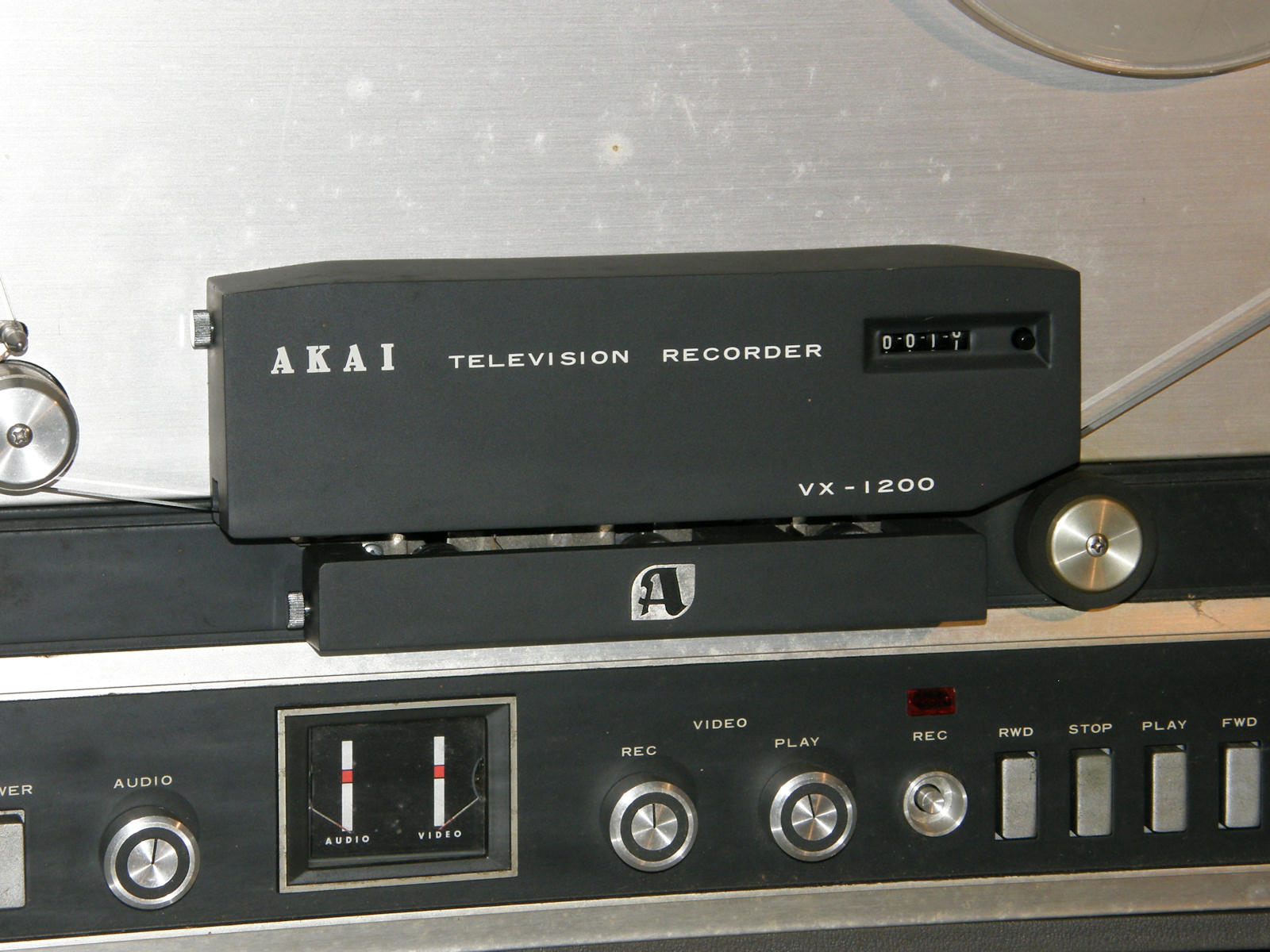
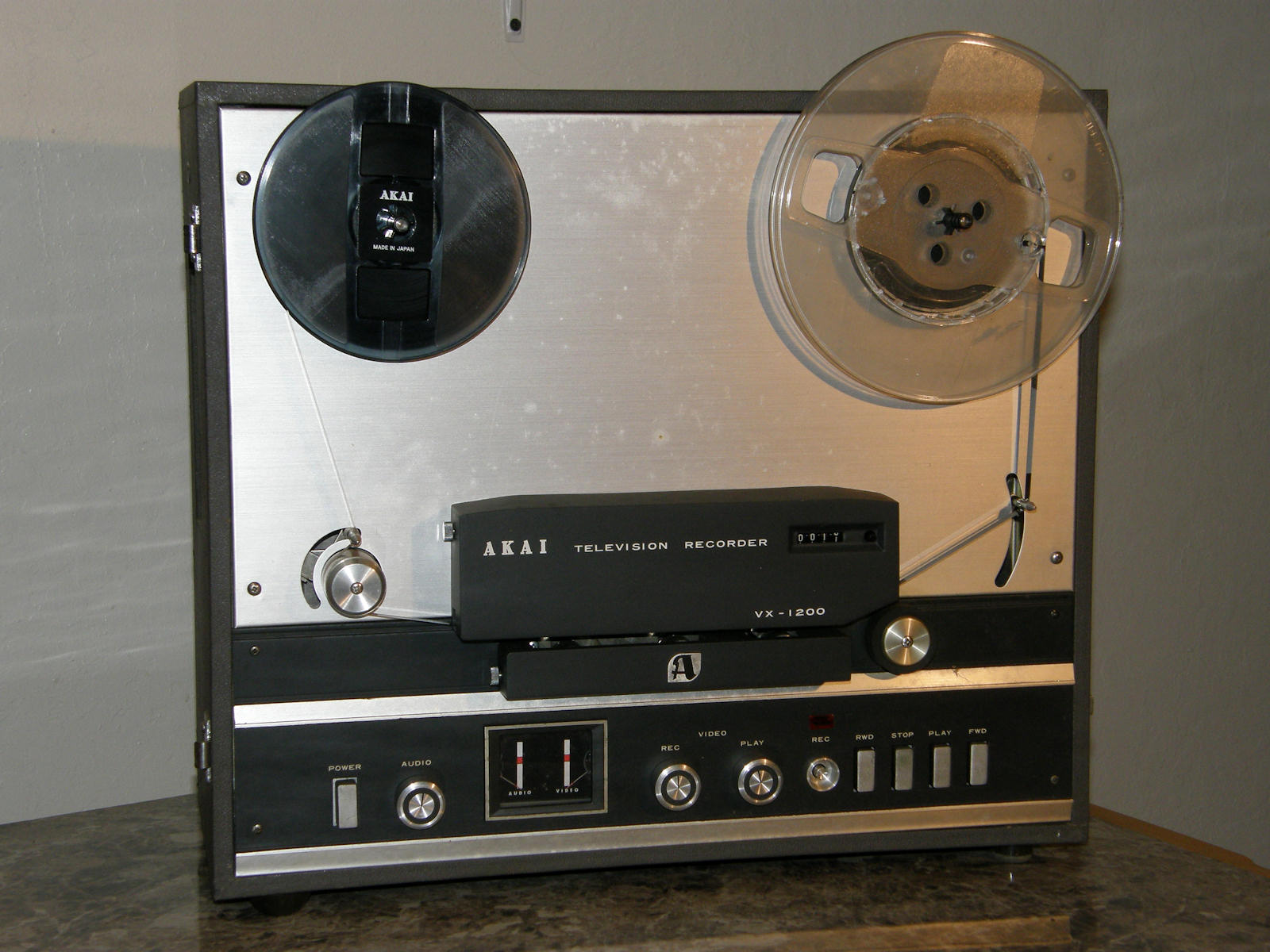
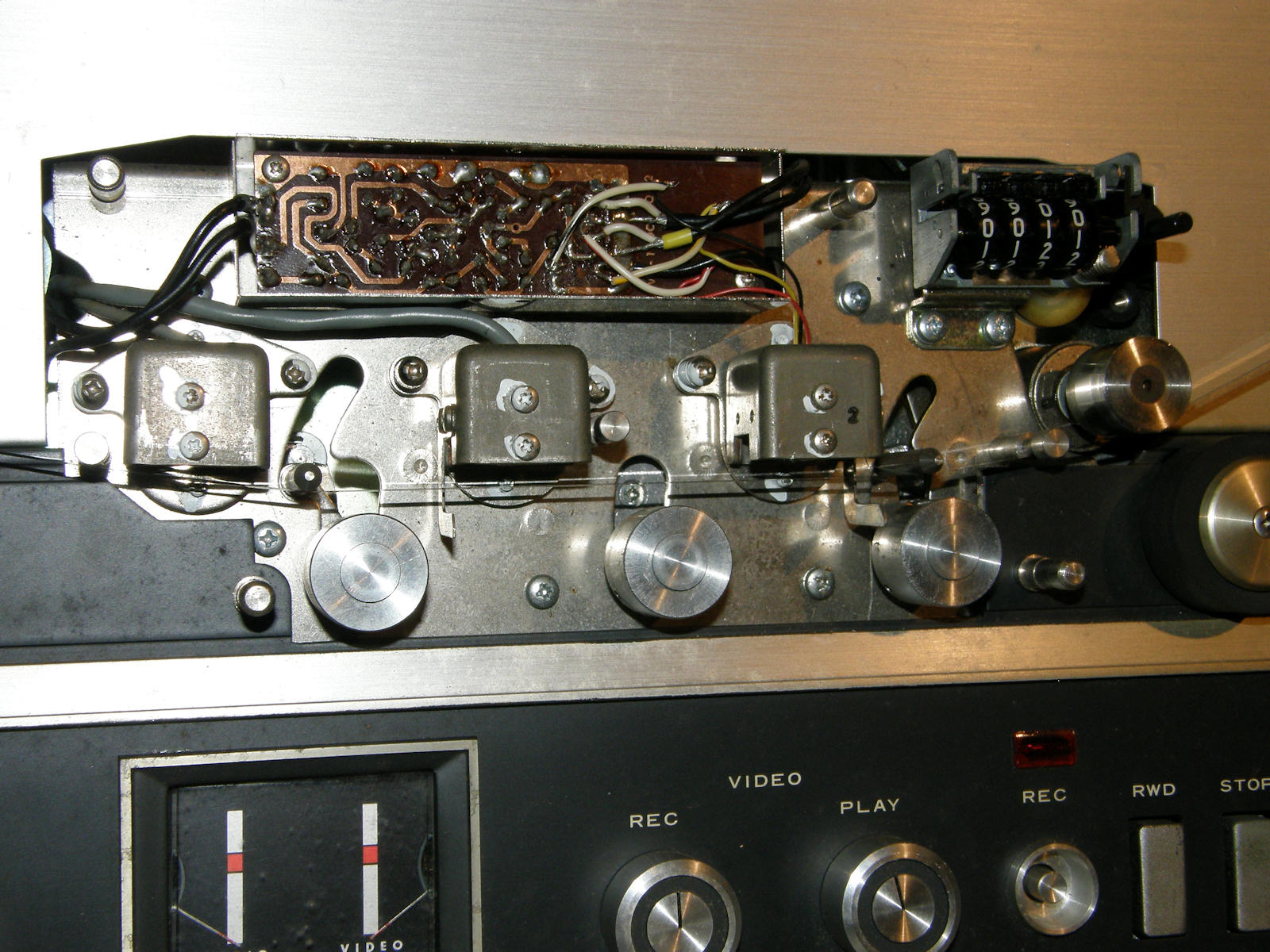
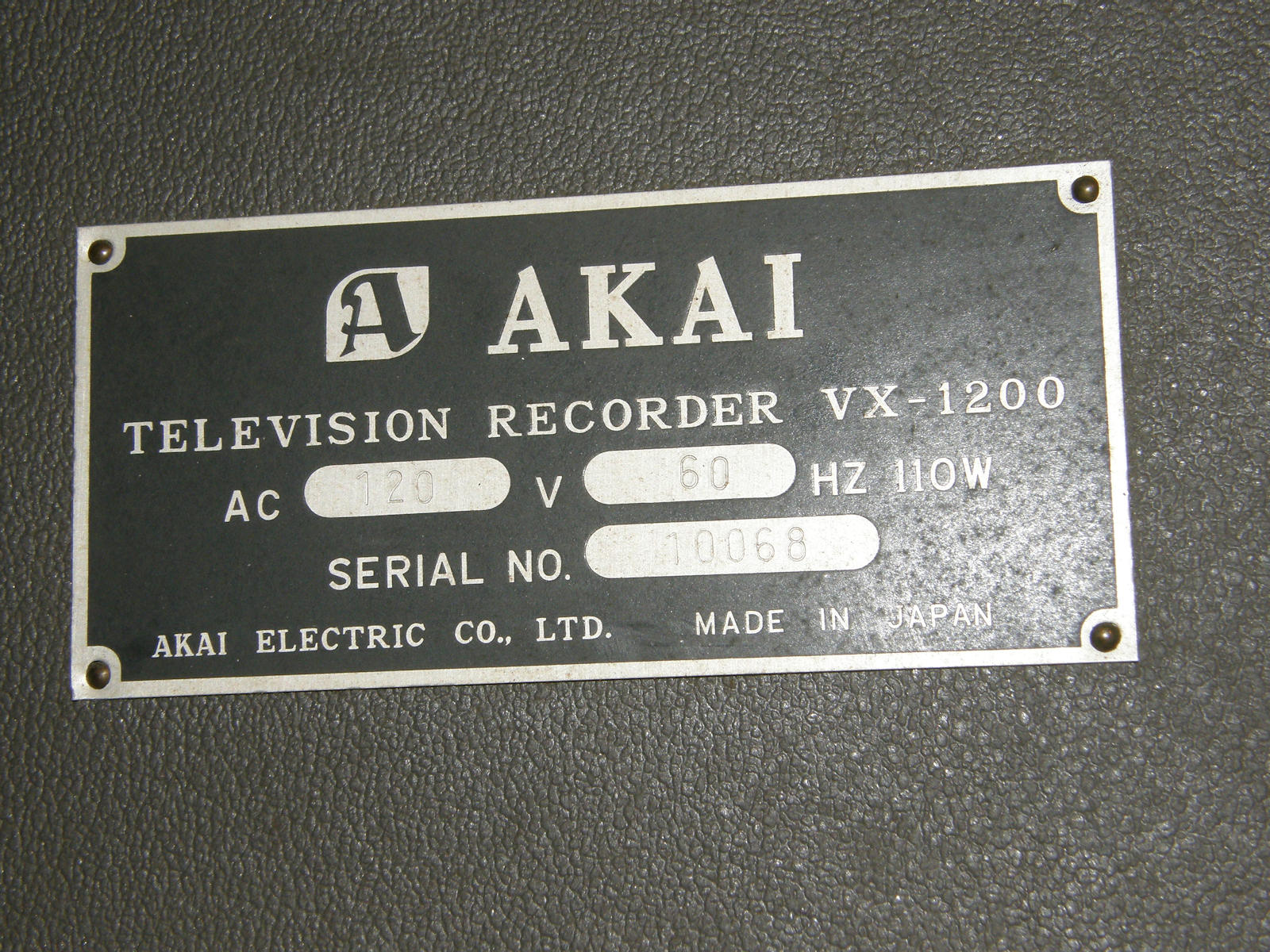
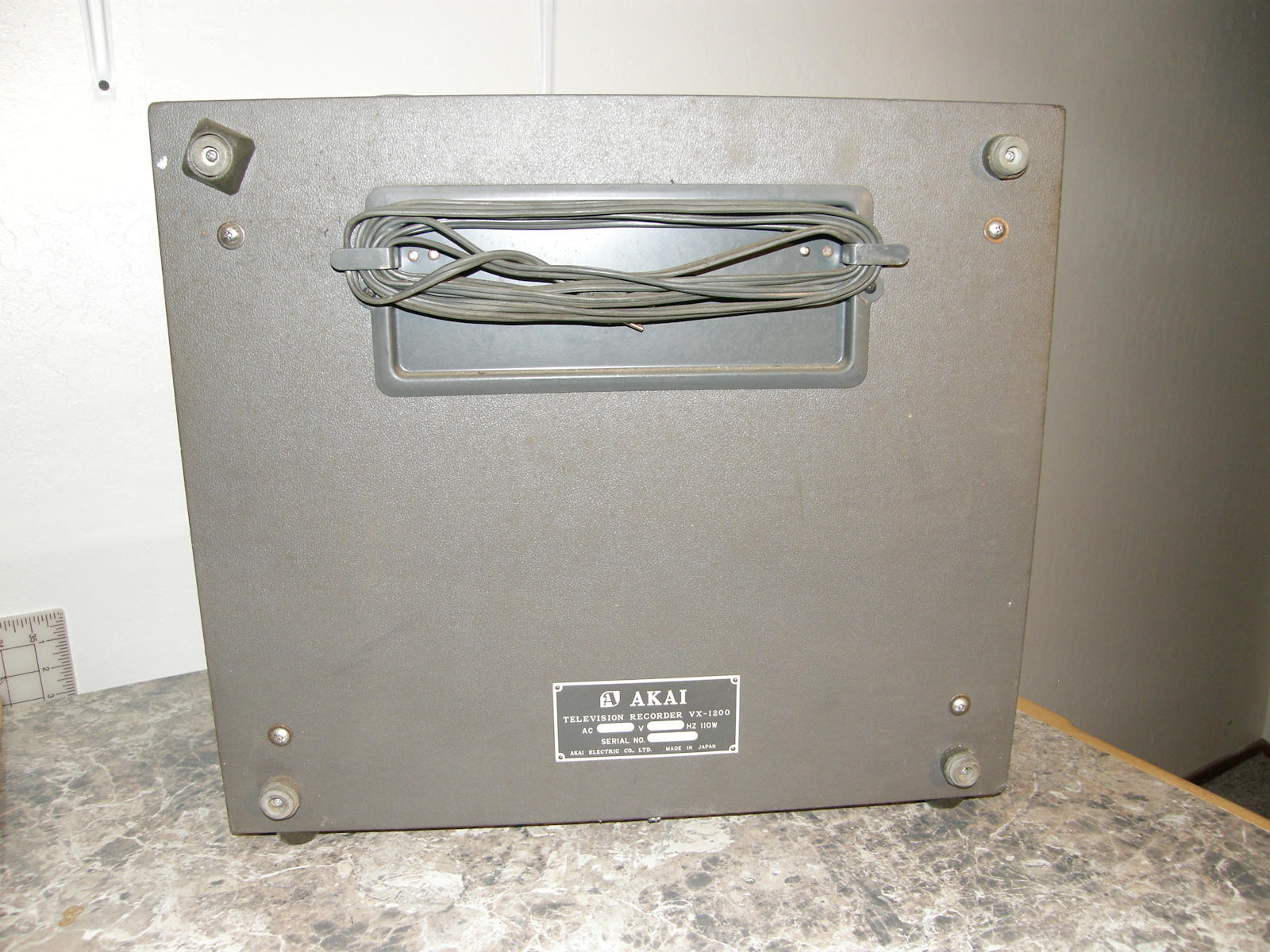
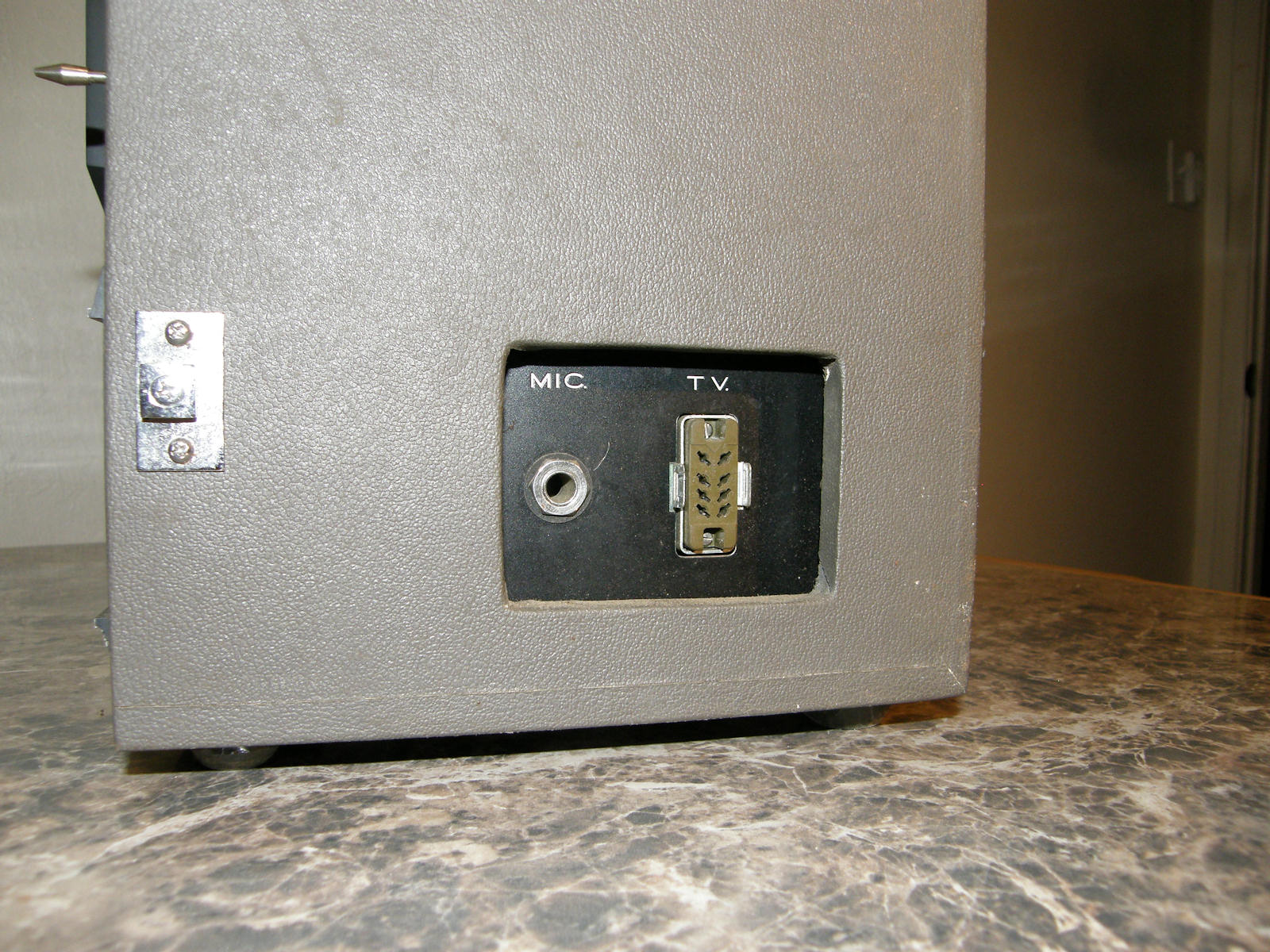
A fixed head, high speed, high bandwidth television tape recorder! Just arrived today, 20131228, at noon. This recorder is more rare than King Tut's pencil box! Pulling 1/4" tape past fixed heads at 45 inches per second, it records a bandwidth of 1MHz! The bottom end is alleged to be 400Hz. That is not good. But I presume they had a work around method for this. As another benefit, this machine might be blind to video standards. That is, as long as the voltage levels and general construction of the video signal is normal, the VX-1200 should be able to record it. Poorly, at the very least. The acid test for this deck will be to see if it can reproduce CBS field sequential color video! But, all of that is in the future. In the photos, the VX-1200 is posing with a 1/4" helical scan video tape usually found on the VT-1xx series VTRs. Allegedly, this deck can use "other" tape. But, I plan to use the most polished tape I can find to reduce head wear. To learn more about this deck in detail, here is the [VX-1200 Advert and Operator's Manual]. Right click the link and select save file to download the PDF file. (14 pages, 9.8 MB) >>> I AM STILL IN DIRE NEED OF THE SERVICE MANUAL FOR THIS AKAI VX-1200! <<< 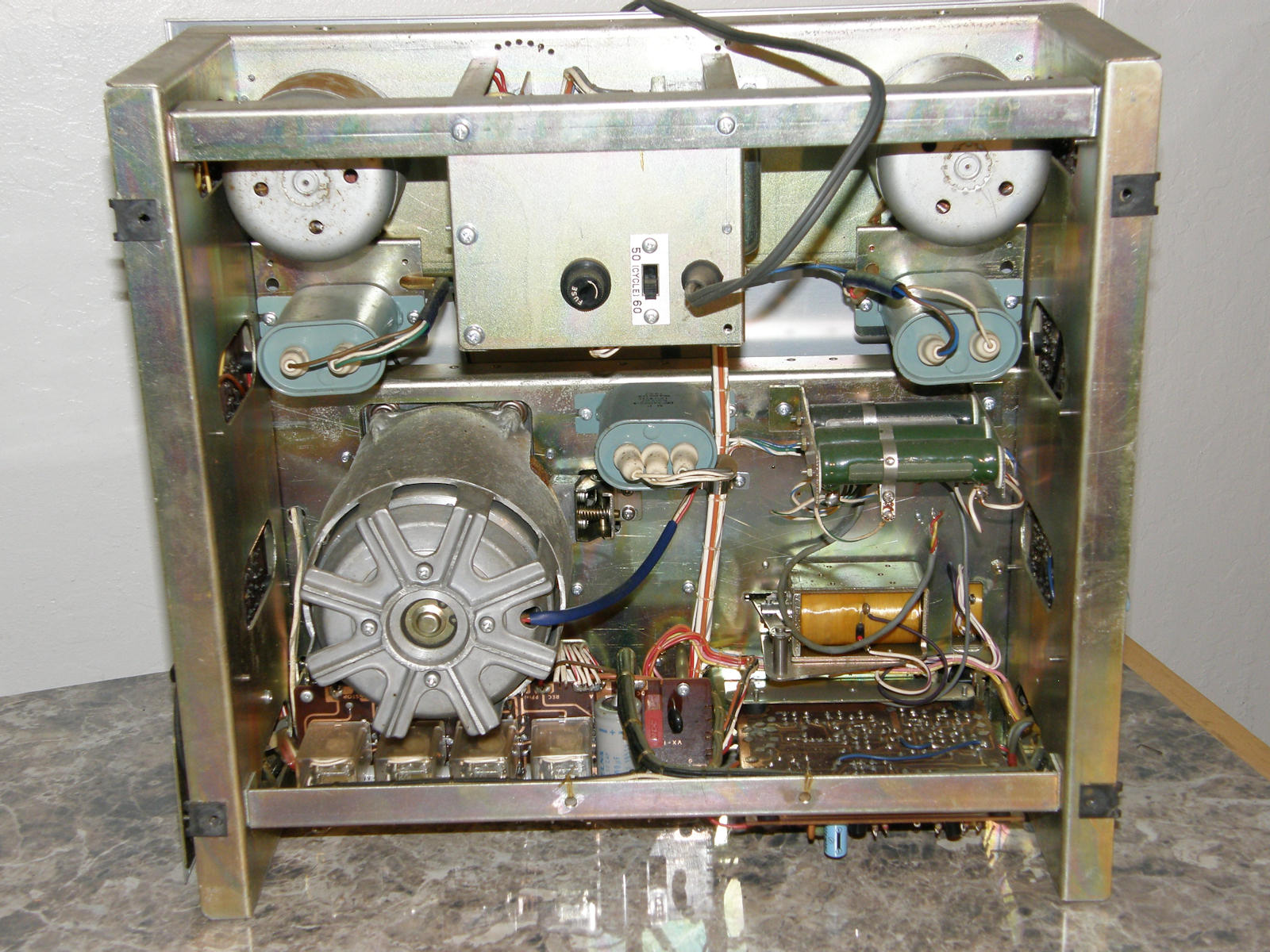
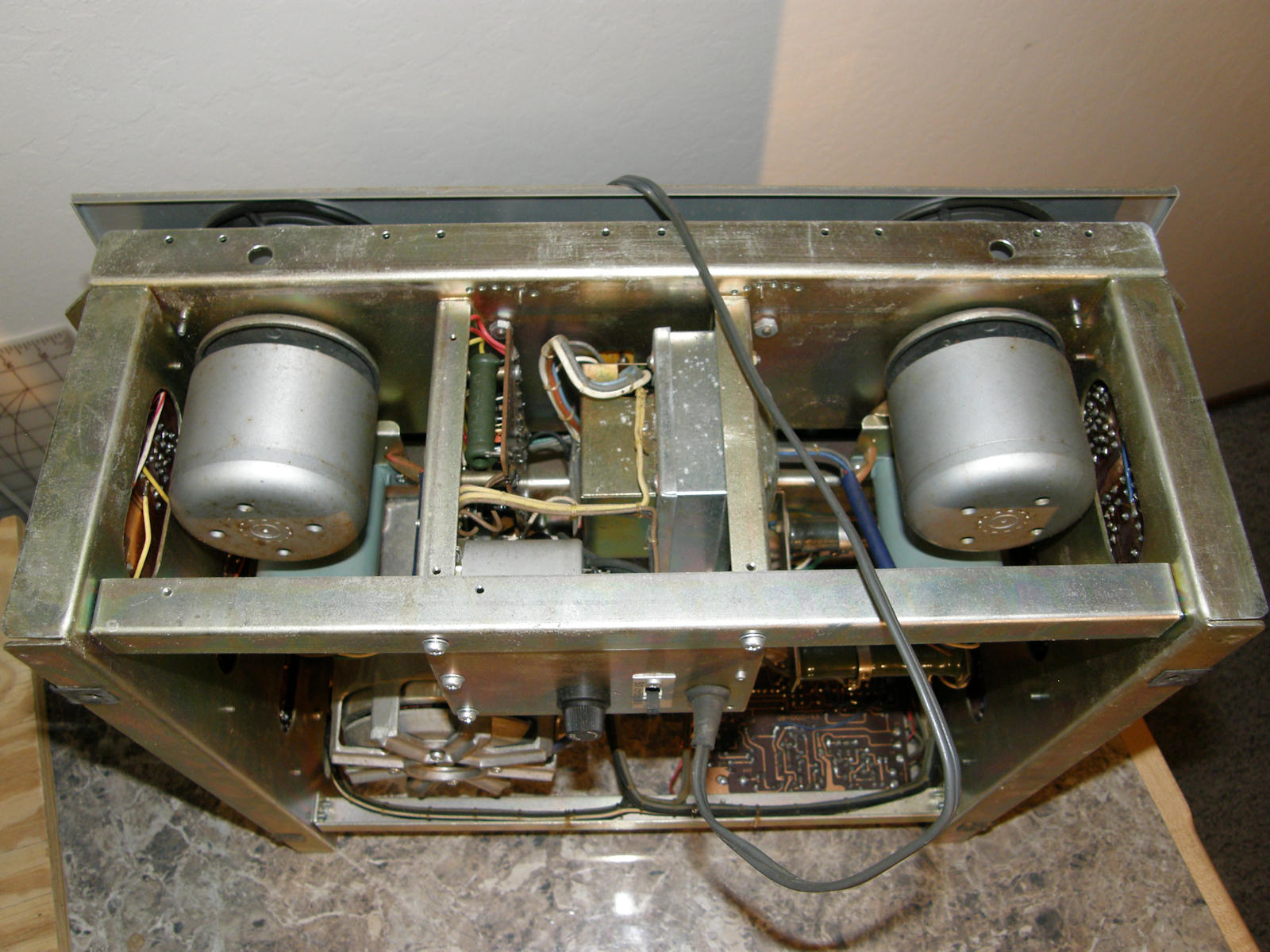
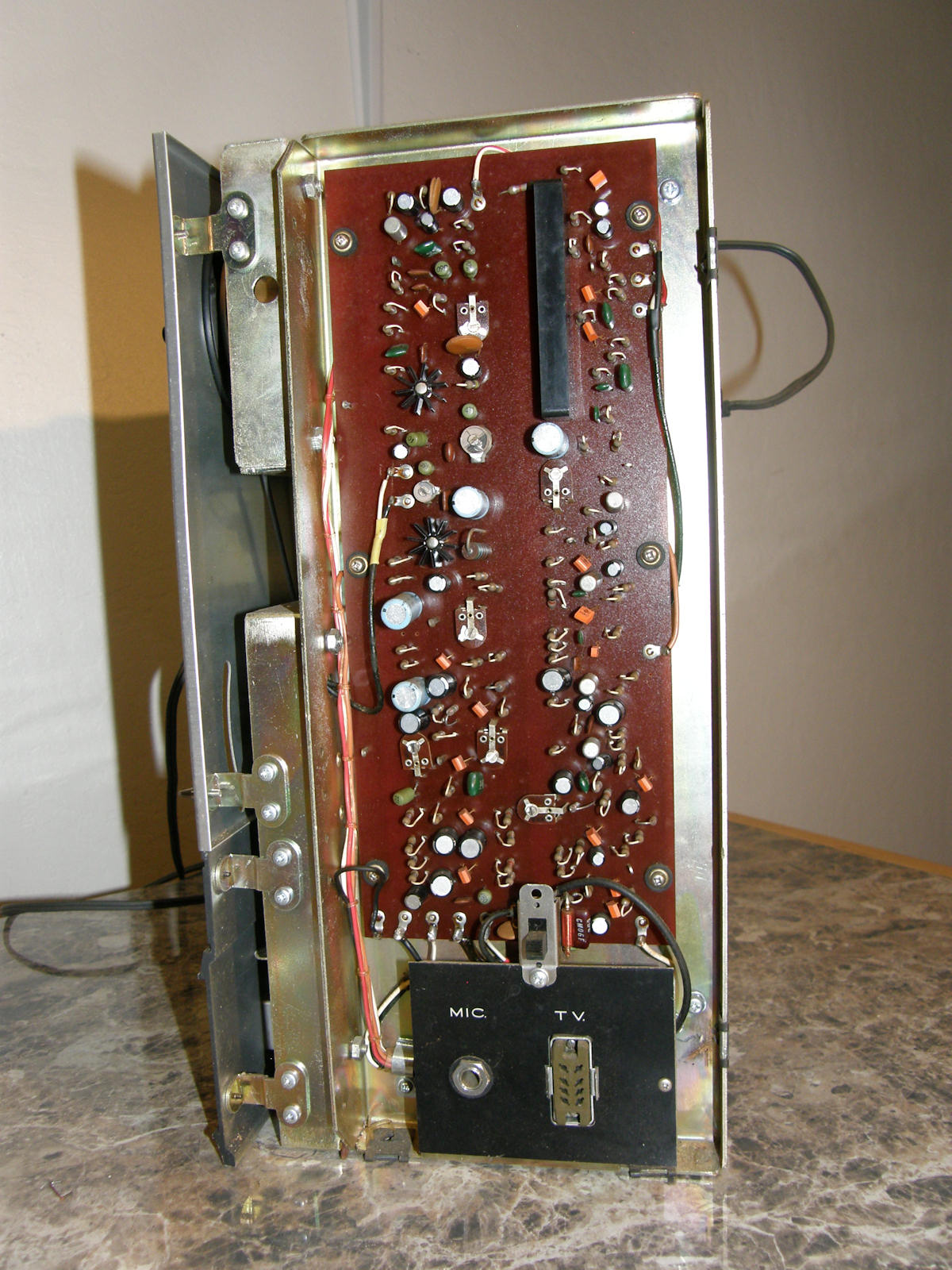
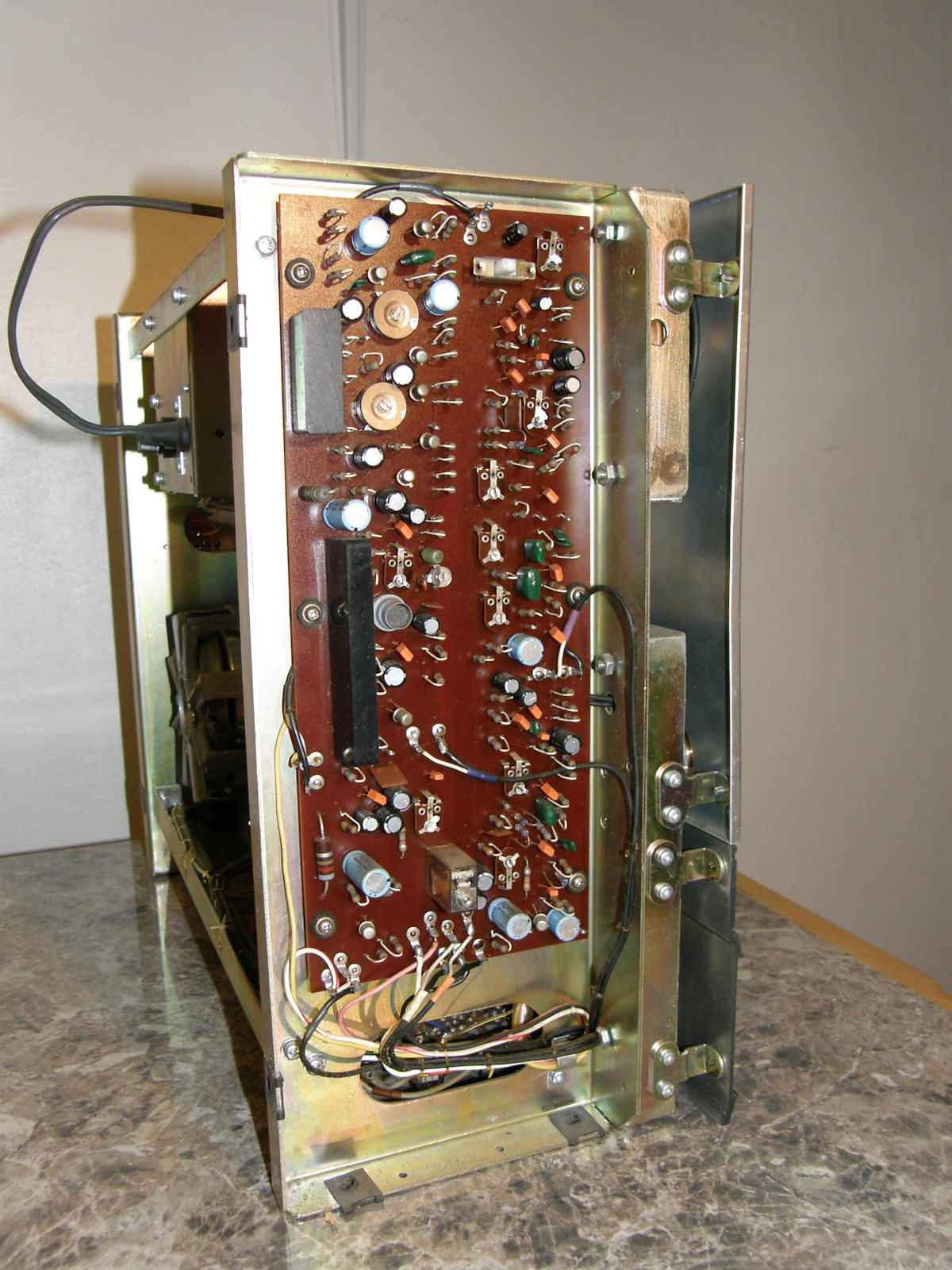
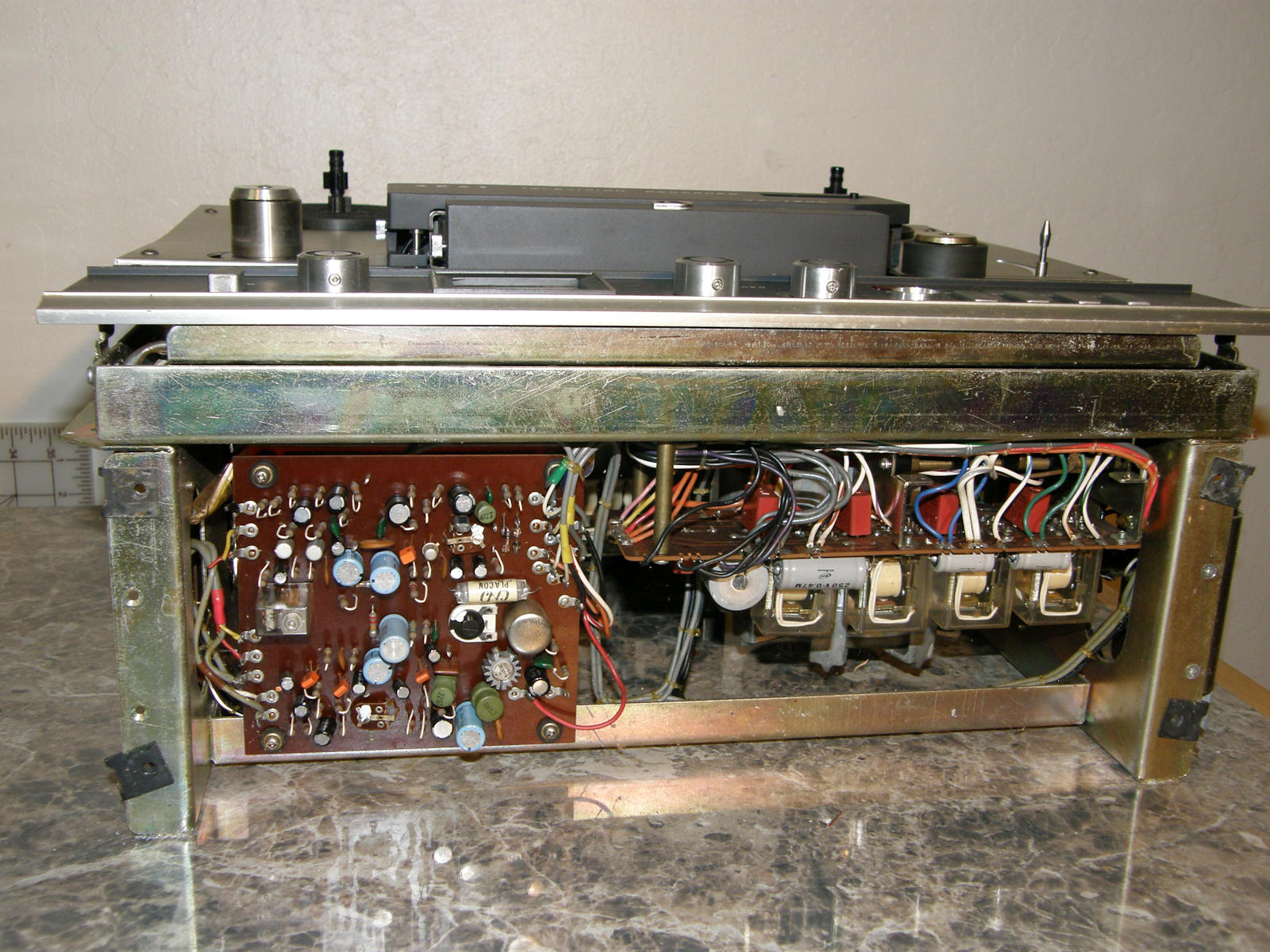
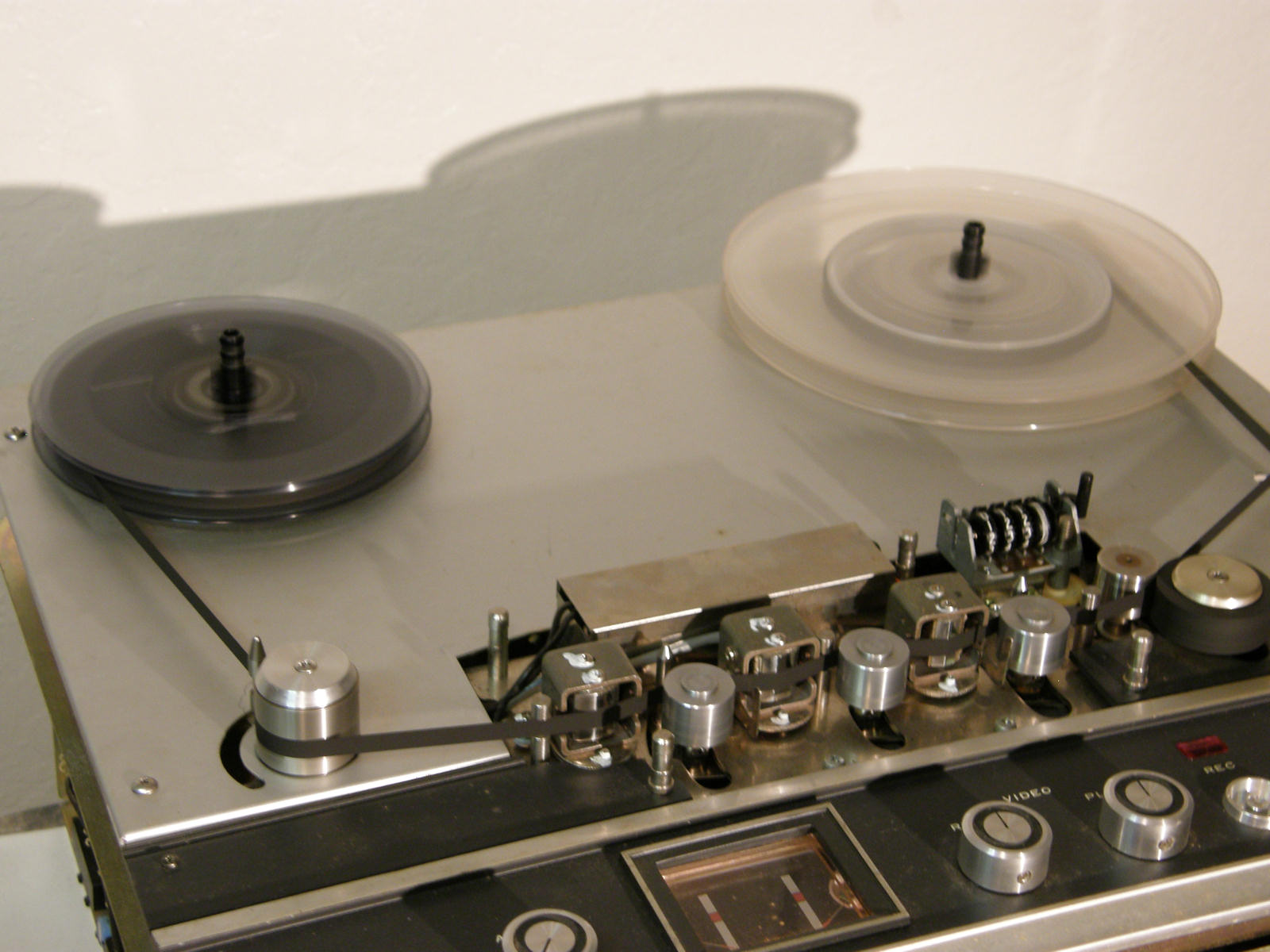
Let's pull the covers off, shall we? Last photo, WTH? We have opened and inspected the VX-1200 by late afternoon on 20131228. Determined that the capstan motor is huge (1/4HP?) and has one hell of a brake pad. That was why it would not turn. The pinch roller was frozen solid. But, the rubber was in good shape. A few minutes with a cleaning cloth a few drops of light machine oil had that spinning freely again. After assuring myself that no hot wires were loose and no screws were in the gears, I put on tape and gave it a spin. It actually runs! >>> I AM STILL IN DIRE NEED OF THE SERVICE MANUAL FOR THIS AKAI VX-1200! <<< 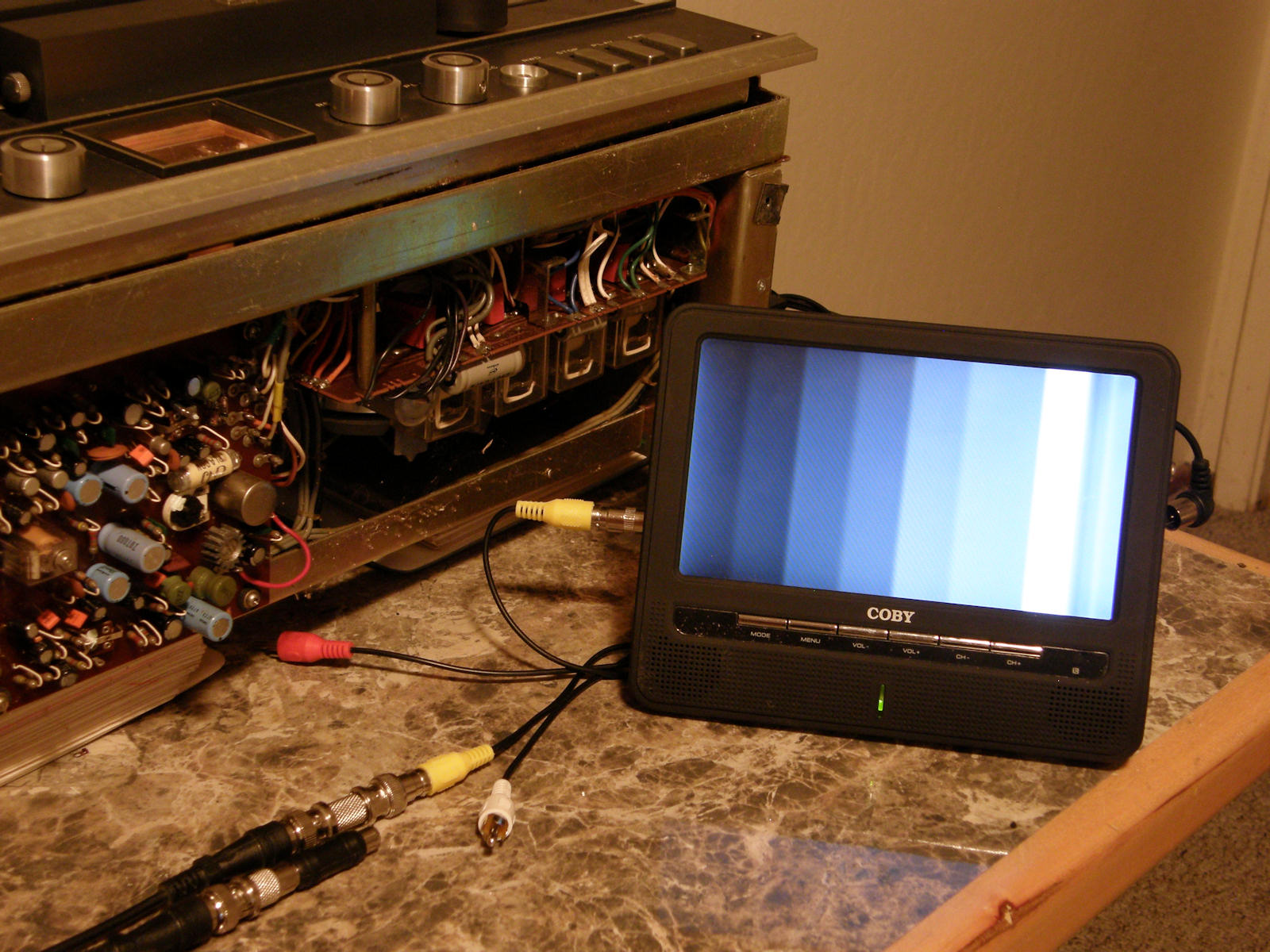
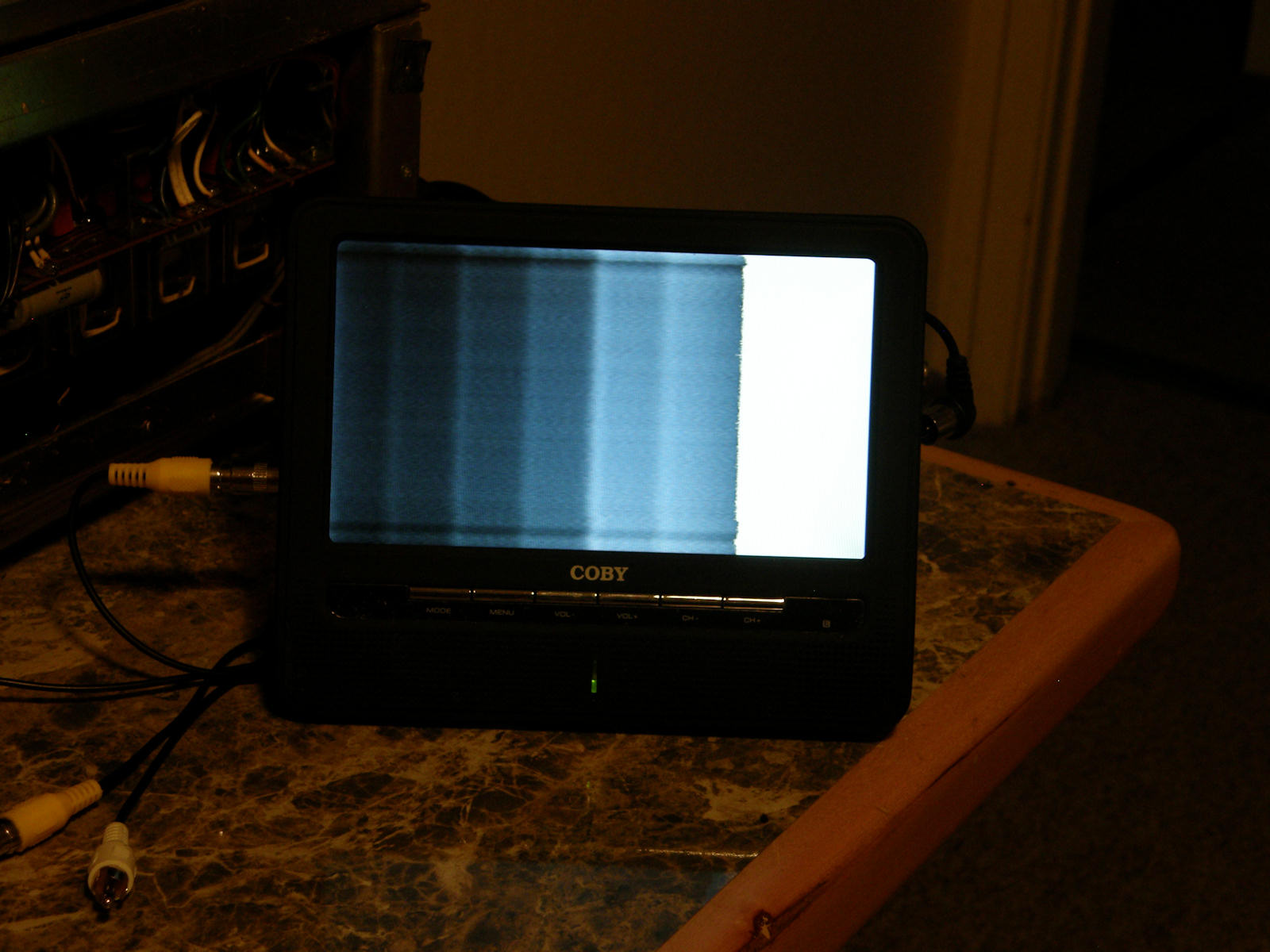
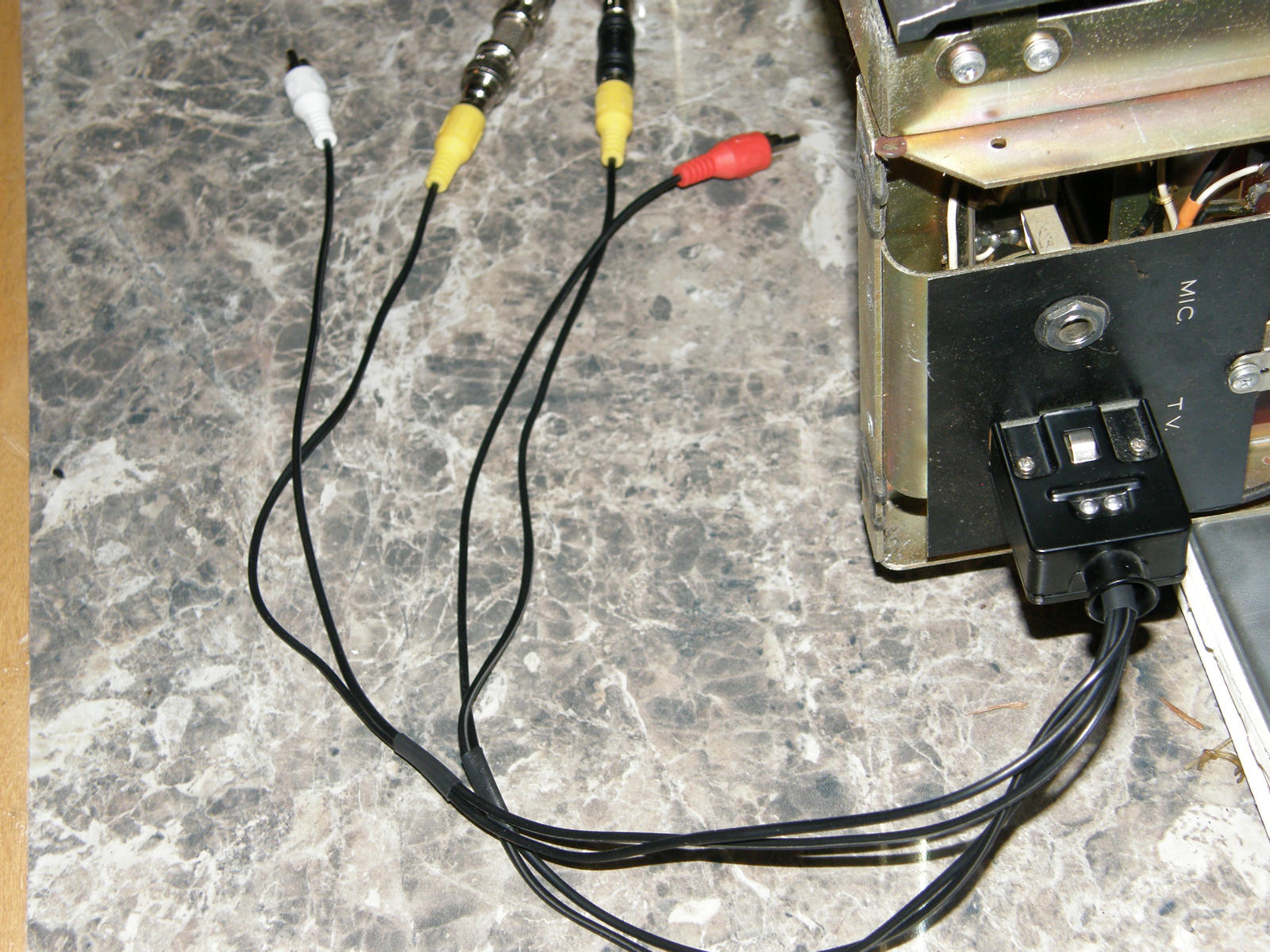
Video pass through and play back. Here is the VX-1200 attempting to record and play at over 50 years old. The manual shows the VX-1200 being used with the VM-200 video monitor. Probably specially adpated for this machine. The first photo is video grey steps in E-E. This only looks like this with the record video level control turned almost to zero. At this setting, though E-E looks OK, nothing is recorded. Setting the record level so that the video meter is in the red, then the playback video is present, second photo, with the two right hand bars hard saturated in the whites. I suspect electrolytic capacitors are causing a lot of the signal distortion observed here. These will be replaced very soon. The last photo is of the breakout cable I was able to make because the user manual shows the pin out in the block diagram. Of course, it was not wired to the EIAJ standard. This deck will not work plugged into a standard monitor, using a standard 8 pin to 8 pin cable using this jack! This is almost the only I/O connector on the TVR. It does have a microphone input jack for local recording or using a camera. You are not seeing conventional images since that video is so distorted by the VX-1200 the monitor can't display an image. I think this problem will go away with the capacitor replacement. I've edited some really bad video today. In making the file small enough for you to download quickly, video quality was sacrificed. Fitting wouldn't you say? [WMV video of the VX-1200 being put through its paces.] Right click and save file for your convenience. >>> I AM STILL IN DIRE NEED OF THE SERVICE MANUAL FOR THIS AKAI VX-1200! <<< 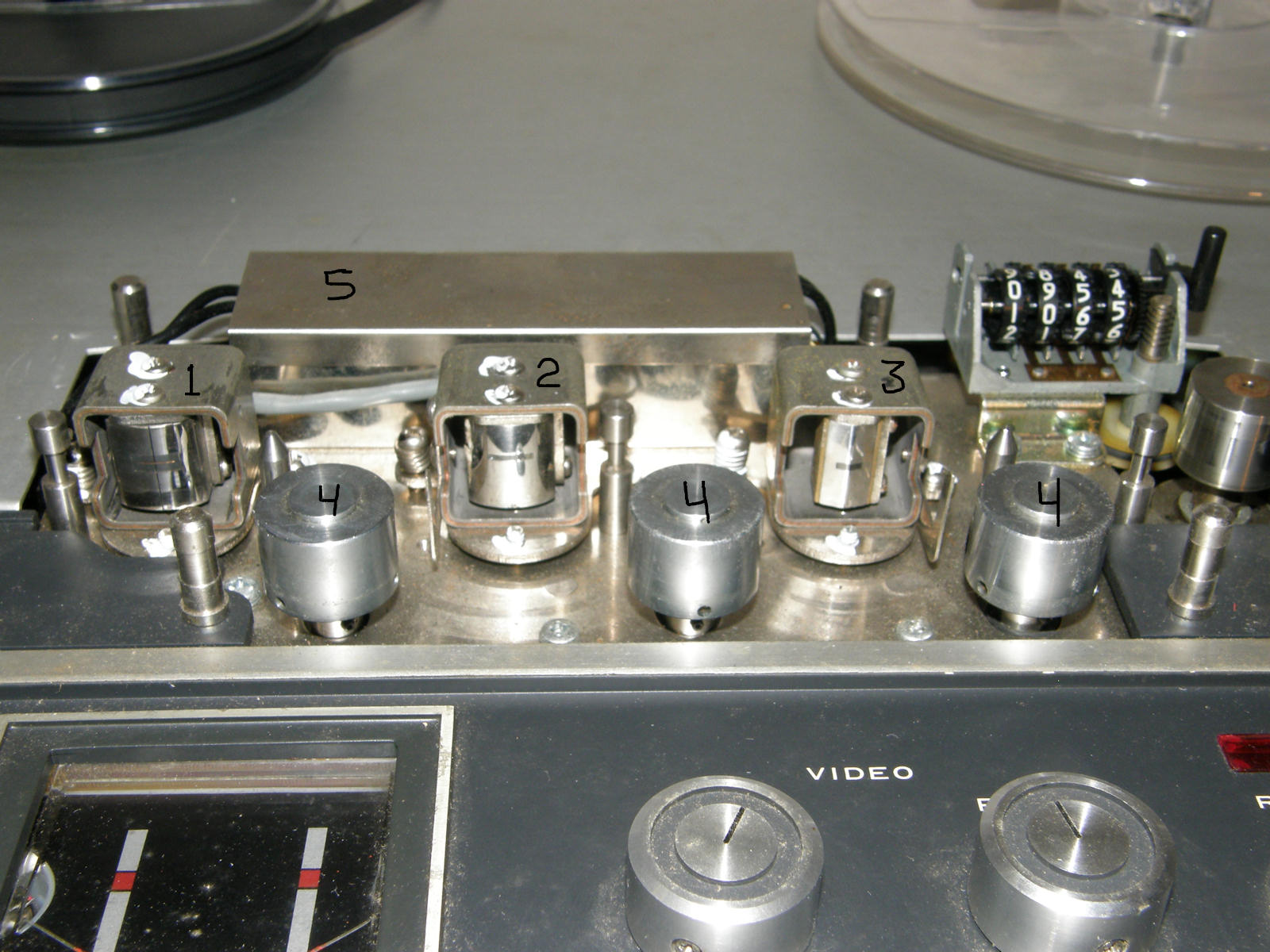
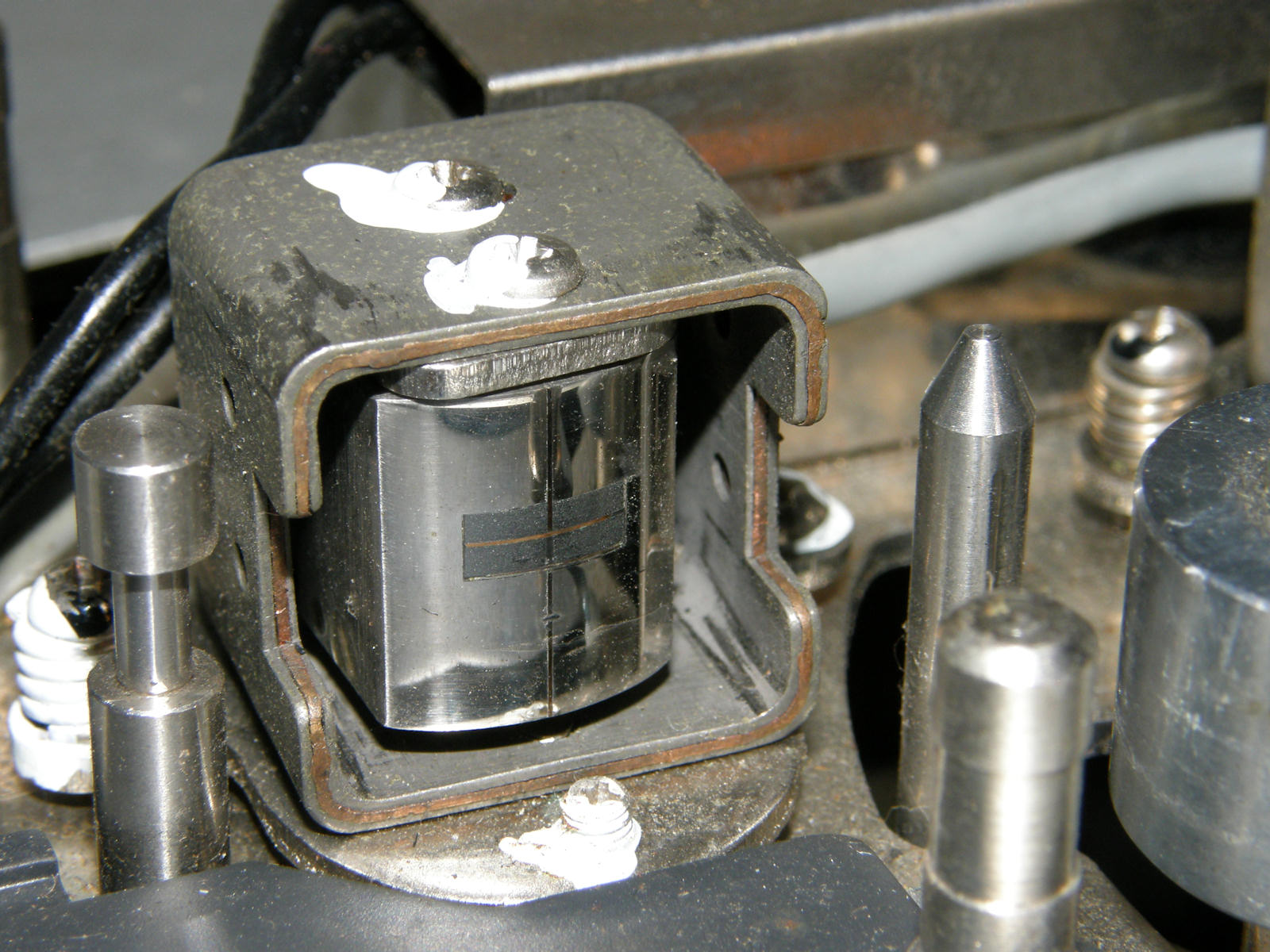
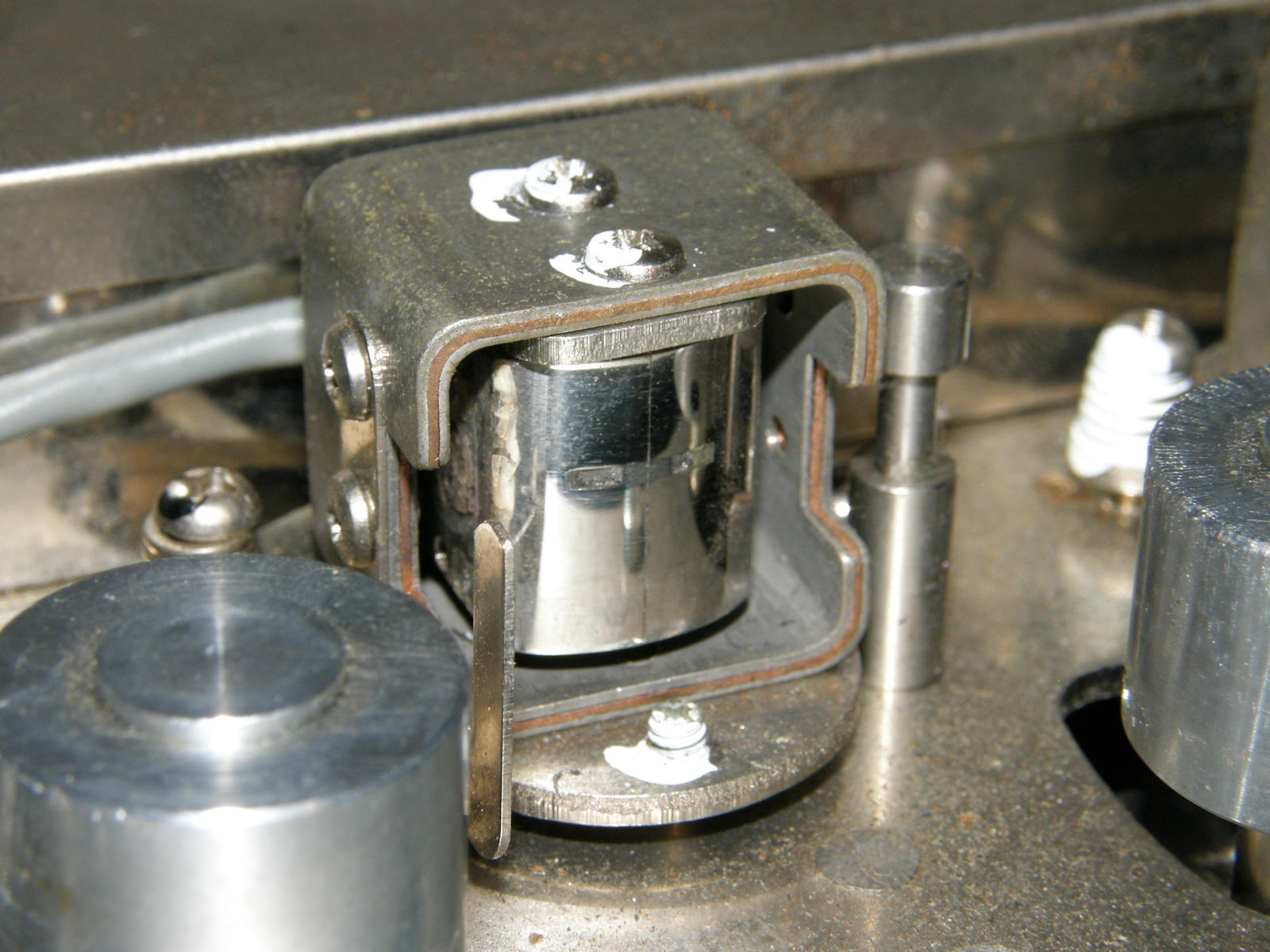
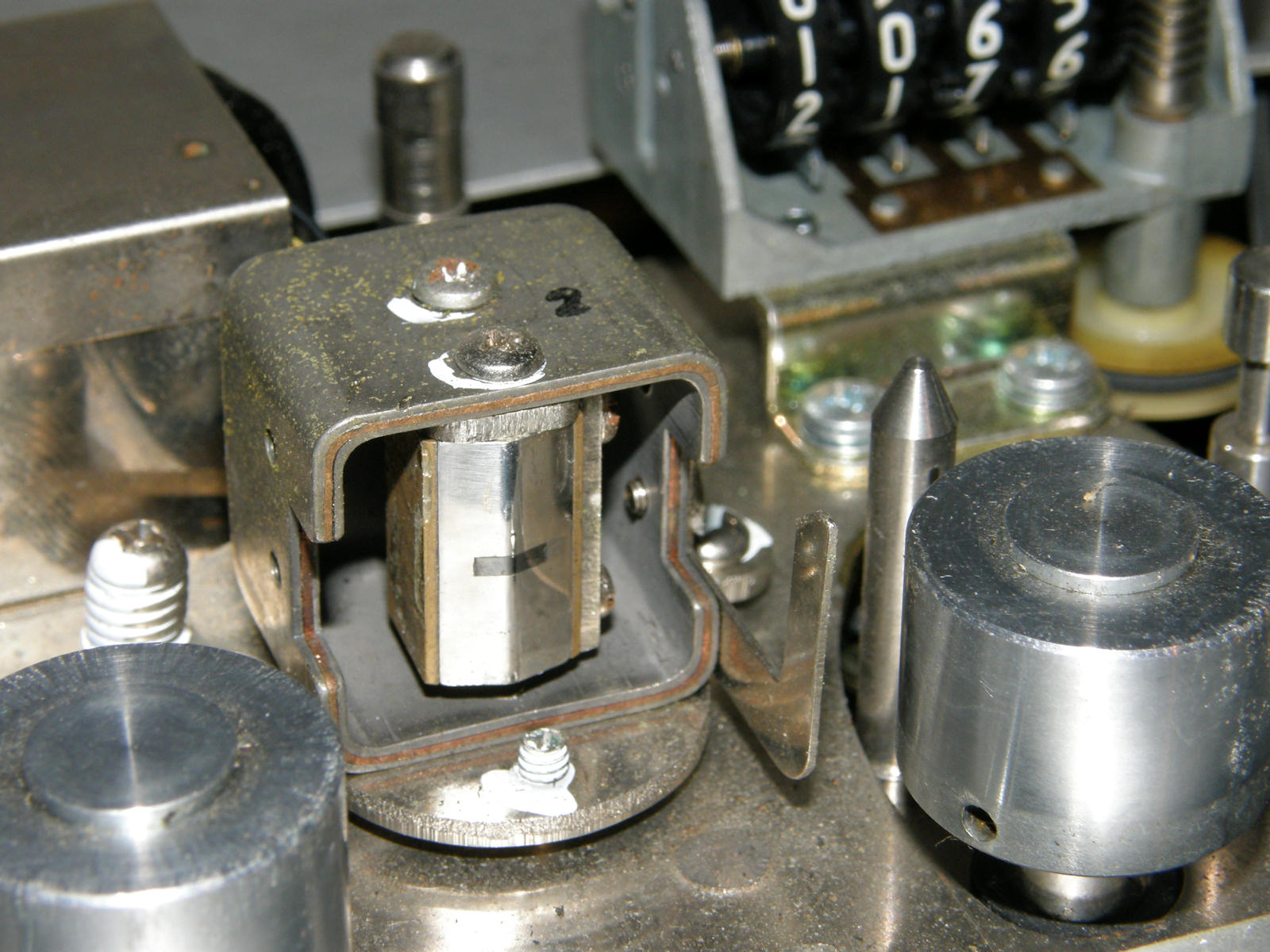
Record / Reproduce Magnetic Head Stack: Erase, Audio R/P, Video R/P In the first photo above the items are; 1. Erase head, 2. Audio record and reproduce head, 3. Video record and reproduce head, 4. Damping rollers, 5. Head preamp and switching electronics. Photo 2 is the close up of the erase head. Photo 3 is the close up of the audio head. Photo 4 is the video head. All of the heads are made of crystal ferrite. By studying the head stack, I have confirmed that this is a "four track" tape recorder. It can record video and audio in both directions. In the photos above, you can see the two track elements of on the full erase head. The audio track is close to the outer edge(s) of the tape. The video track is on the inside track(s). When the tape has been run from start to end, it can be flipped over and run through the VTR again, just like in audio. The specifications indicate that the video bandwidth extends from 400Hz to 1MHz. The audio is 100Hz to 10KHz. In both channels, the low end frequency is a big problem. The VX-1200 uses direct recording for both audio and video. Getting wide bandwidth from a magnetic recording head is very difficult. It is not the absolute frequency that is at issue. It is the range of frequencies it is required to record and reproduce. Audio bandwidth of 20Hz to 20KHz is range of ten octaves. Video going from 400Hz to 1Mhz is a range of 11 octaves. Full bandwidth (NTSC) video is 30Hz to 4.2MHz or 18 octaves. Ten octaves is just about the total practical range for any magnetic head. The Akai engineers trimmed the bandwidth of the video to make it fit within within this ten octave limitation. I am guessing that there is a substitute pulse or process to maintain the near DC bandwidth required to recover the sync. More info as I discover it. A conventional video tape recorder uses a different method to record the video on tape. The video signal is applied to an FM modulator operating at a frequency above the highest frequency in that video signal. A typical recording frequency in small format decks is 2 to 4MHz. That is only two octaves! Broadcast recorders typically use frequencies well north of 10Mhz. The narrower the range of frequencies, the easier it is to equalize the frequency response and phase delay of the heads. The better this is done, the better the TV image. The VX-1200 operates on the exact opposite principal. >>> I AM STILL IN DIRE NEED OF THE SERVICE MANUAL FOR THIS AKAI VX-1200! <<< [HOME] [VIDEO RECORDERS MUSEUM] Created: December 24, 2013 Last updated: December 29, 2013 |